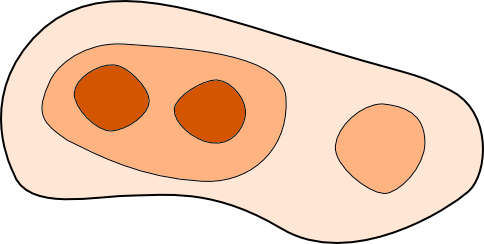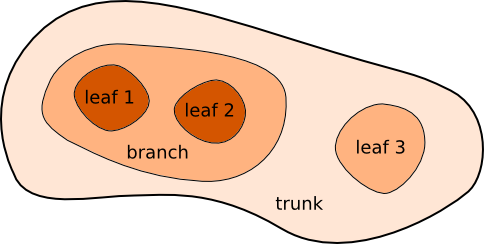Astronomical Dendrograms in Python¶
The astrodendro package provides an easy way to compute dendrograms of
observed or simulated Astronomical data in Python.
About dendrograms¶
The easiest way to think of a dendrogram is to think of a tree that represents the hierarchy of the structures in your data. If you consider a two-dimensional map of a hierarchical structure that looks like:

the equivalent dendrogram/tree representation would look like:

A dendrogram is composed of two types of structures: branches, which are structures which split into multiple sub-structures, and leaves, which are structures that have no sub-structure. Branches can split up into branches and leaves, which allows hierarchical structures to be adequately represented. The term trunk is used to refer to a structure that has no parent structure.
Mapping these terms back onto the structure gives the following:

For an example of use of dendrograms on real data, see Goodman, A. et al (2009).
Documentation¶
Reporting issues and getting help¶
Please help us improve this package by reporting issues via GitHub. You can also open an issue if you need help with using the package.
Developers¶
This package was developed by:
- Thomas Robitaille
- Chris Beaumont
- Adam Ginsburg
- Braden MacDonald
- Erik Rosolowsky
Acknowledgments¶
Thanks to the following users for using early versions of this package and providing valuable feedback:
- Katharine Johnston
Citing astrodendro¶
If you make use of this package in a publication, please consider adding the following acknowledgment:
This research made use of astrodendro, a Python package to compute dendrograms of Astronomical data (http://www.dendrograms.org/)
If you make use of the analysis code (Computing Dendrogram Statistics) or read/write FITS files, please also consider adding an acknowledgment for Astropy (see http://www.astropy.org for the latest recommended citation).